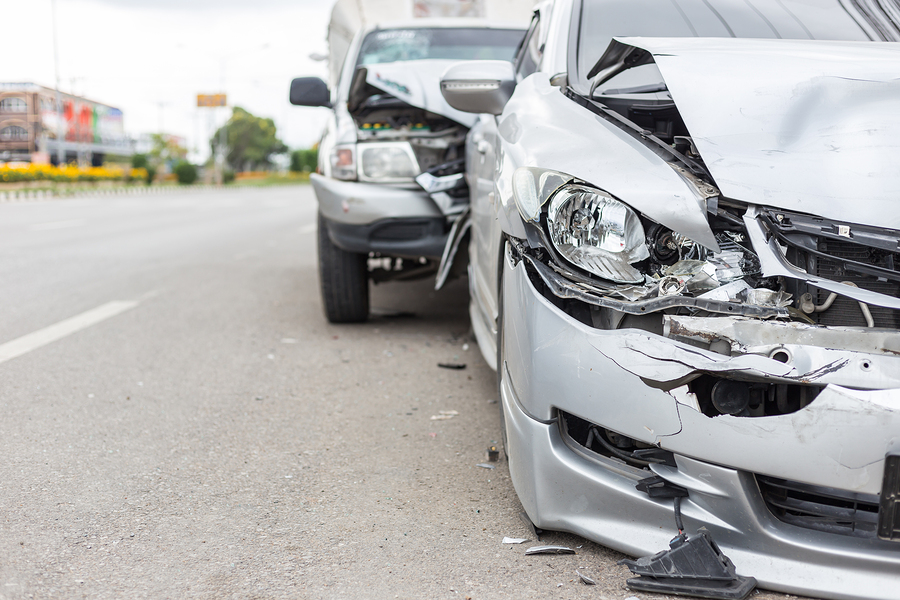We are a quantitative society. Consumers find statistics everywhere in advertising copy, social media sites, and professional blog posts.
The compelling numbers heighten our awareness of the consequences of our actions and the negligence of those sharing our roadways. From the perspective of a data-driven viewpoint, we learn the major causes of motor vehicle accidents and the expected outcomes.
Following a personal injury, especially one resulting from someone else’s negligence, life can get complicated. Property damage and physical injuries are not always obvious at first glance.
Those involved in a motor vehicle collision must seek a medical evaluation and consult a personal injury lawyer as soon as possible.
Roadway Crashes Are Not All Accidents
NBC channel 12 recently reported Virginia ranks 5th as one of the most dangerous cities to drive in, following behind Nebraska, South Carolina, Wisconsin, and Ohio. The data, curated from information listed on insurance applications, ranked the cities based on reported driving violations, DUIs, speeding tickets, and at-fault accidents.
About 30 percent of Virginia’s applicants reported a driving incident:
- Applicants who reported a speeding ticket: 15.98 percent
- Applicants who reported an at-fault accident: 12.28 percent
- Applicants who reported a DUI violation: 1.88 percent
The Virginia Department of Motor Vehicles publishes an annual statistical report detailing some crash facts.
The most recent year’s data indicates 105,600 annual motor vehicle crashes:
- 6,624 alcohol-related
- 22,429 speed-related
- 18,808 due to driving distracted
There are many reasons for motor vehicle crashes, and most of them are preventable. Negligent behavior, such as driving too fast, being impaired, or being distracted, is not an accident—it is a deliberate disregard for the welfare of those sharing the roadways, and those at fault can and should be held responsible.
The cost of property damage, medical bills, lost wages, and pain and suffering can grow oppressive. The legal process for seeking compensation can be a significant life stressor without the support and assistance of a personal injury attorney.
Distraction
There are visual, manual, and cognitive components to distracted driving. Alexandria Living magazine stated that distracted drivers caused 21.5 percent of the fatal motor vehicles in the Commonwealth.
Recent national statistical data tells us, in one recent calendar year:
- 3,142 people died from distracted driving
- 8.7 percent of all car crash fatalities were due to distracted driving
One roadway study indicates 23.6 percent of drivers on the road are texting—this is almost one out of every four! Concerning, to say the least. The study went on to say that 52.5 percent of motorists are eating while they are driving, 11.7 percent are taking pictures, and 6.5 percent are putting on makeup.
“If you are driving at 55 miles per hour and take your eyes off the road for five seconds to write a text message, you have traveled the length of a football field (end zones included) without looking at the road.” — Federal Motor Carrier Safety Administration
An analysis done by Drive Smart Virginia revealed distraction was a component in almost six out of 10 moderate-to-severe accidents involving teen drivers, which is four times more than police reports may indicate. Nationally, motor vehicle accidents are responsible for the death of seven teens every day.
Impairment
The DMV reminds us that driving while impaired decreases visual function, multitasking ability, and judgment. At a 0.05 percent BAC, drivers experience reduced ability to track moving objects, difficulty steering, and a reduced response to emergencies. One in four drivers on America's roads tested positive for at least one drug that makes them dangerous.
The Food and Drug Administration warns certain medications, including over-the-counter medications may cause:
- Sleepiness/drowsiness - One in 25 adult drivers have admitted falling asleep at the wheel in the past 30 days, according to the CDC.
- Vision disturbances - Statistically, night driving is more dangerous than daylight driving.
- Vertigo - Up to 90 percent of oral medications list dizziness as a possible side effect, according to Pharmacy Times.
- Loss of concentration - In the interest of safety, driving requires total concentration.
- Decreased reaction time - Academic publications have noted how hard it is for sober drivers to stop in time to avoid accidents. Impaired drivers are far more likely to crash and hurt or kill someone.
Recent information from the Virginia Department of Motor Vehicles indicates:
- 32 percent of all traffic fatalities were alcohol-related in Virginia—in one recent year, 264 of the 827 roadway fatalities were alcohol-related
- 18,648 people were convicted of DUI in Virginia in one recent year
- 28 people in the United States lose their lives in drunk driving crashes every day
Sobriety checkpoints are legal in Virginia, and according to one report, they reduce fatalities, injury accidents, and property damage by about 20 percent.
Speed
The National Safety Council reports, on a national level, that speeding causes 26 percent of all traffic deaths.
Driving too fast:
- Cuts down on a driver’s reaction time
- Increases stopping distance
Driving too fast for roadway conditions is a factor in 43 percent of accidents on roads with ice or frost, 41 percent of those collisions on surfaces that are muddy or covered with gravel and dirt, and 40 percent of crashes on roads with moving or standing water.
Accident Statistics Are More Than Numbers
The right personal injury attorney understands these accident statistics represent the debilitating physical, financial, and emotional harm caused to their friends, neighbors, and clients. If your family is dealing with the aftermath of a personal injury, contact a personal injury attorney today to get started.
The numbers are increasing. Currently, there is a 12 percent rise in motor vehicle crashes nationally. Safe driving initiatives and technology are helping to mitigate the impact of roadway accidents.
General Motors initiatives, such as Periscope, reports some interesting statistics from their current safety study:
- One-third of all drivers have pulled over because they were too emotional to drive
- 40 percent of drivers feel more anxious driving now than they did before the pandemic
- 54 percent of people have cried while driving
The impact of the pandemic has greatly influenced driving safety. This GM study tells us that 64 percent of drivers aged 16-34 report feeling angry or upset while driving.
The Causes of Accidents Have Consequences
Distraction, driving while under the influence of drugs or alcohol, and driving while fatigued all have serious and sometimes deadly consequences. A personal injury attorney can assist accident victims and their families secure financial compensation for damage caused by another person’s negligence.
Distracted driving is negligent driving; it is far from safe and significantly contributes to accidents and injury.
One academic study from Virginia Tech reminds us that even taking our eyes off the road for two seconds doubles our near-crash/crash risk. The DMV reminds us that driving under the influence impairs visual function, manual dexterity, cognitive function, and judgment. Drivers with a 0.05 percent blood alcohol content will find it difficult to focus on and track moving objects, will experience difficulty steering, and have a reduced response time in emergencies.
Sleep deprivation can endanger people as much as driving while intoxicated.
Some signs of driving fatigue include:
- Non-stop yawning
- Nodding off
- Heavy feeling eyelids
- Having difficulty keeping track of time
Excessively fatigued drivers will often miss exit signs, frequently fail to notice traffic signals, drift into another lane, and drive off the road. According to the National Sleep Foundation, 60 percent of adult drivers reported driving while drowsy, and in a single month look back period, 1 in every 25 adults fell asleep at the wheel.
Sleepiness or fatigue causes:
- Impaired reaction time, judgment, and vision
- Problems with information processing and short-term memory
- A reduction in safe driving ability
- Aggressive behaviors
Motor Vehicle Accident Injuries Are Extensive And Expensive
Life after an injury is challenging. More than 5.3 million people in the United States live with a lifelong disability after an accident. The Virginia DMV statistical data tells us one crash happens every 4.1 minutes—with 179 injuries and 2.3 lives lost every day in the Commonwealth. One out of every 25.6 Virginia drivers crashes. On a national level, recent motor-vehicle incidents totaled $4.8 million, and total motor-vehicle injury costs hit $473.2 billion.
These costs include:
- Salary and productivity losses
- Medical expenses
- Administrative expenses
- Personal property damage
In Virginia, the one-year cost of motor vehicle fatalities is $11 million in medical costs and $1.30 billion in work-loss costs.
The Physical Consequences of a Motor Vehicle Crash
Data from the National Safety Council surrounding physical injury following an accident tells us our odds of being in a fatal car accident are 1 in 101. The injuries sustained in a motor vehicle crash often depend on the type of crash, the speed of the vehicles involved, the position of the passengers, and often environmental issues. Some of the most common injuries include:
#1. Soft tissue injuries
Up to 50 percent of accident victims with soft tissue injuries may develop persistent symptoms—these may cause forgetfulness and emotional disturbances, according to Oxford Academic.
#2. Spinal cord injuries
Auto accidents cause 36.5 percent of spinal cord injuries.
#3. Nerve damage
The cranial nerves are subject to severe damage in an automobile accident. These are the most delicate nerves in the body. Damage can result in intense pain, vertigo, loss of hearing, paralysis, loss of smell and taste, a change in facial expressions, problems with speech, and difficulty swallowing.
#4. Crush injuries
Crush injuries prompt almost one-fifth of admissions to Level I trauma centers, with auto accidents among the leading causes.
#5. Internal organ injuries
Internal organ injuries require immediate emergency medical treatment. They can include abdominal aorta aneurysm, Internal bleeding, pneumothorax, ruptured spleen, and damage to the stomach, lung, major blood vessels, and the heart.
#6. Burns
Burns are one of the leading causes of wrongful death and unintentional injury in the United States, according to the American Burn Association.
#7. Traumatic brain injuries
The lifetime costs of medical treatment for a traumatic brain injury can run as high as $3 million.
#8. Amputation
Motor vehicle crashes are the most common cause of traumatic amputation; 70 percent are upper extremity amputations, and 22 percent of people with lower extremity amputations return to the hospital within 30 days due to complications. An amputation requires long-term treatment to rehabilitate the individual mentally and physically.
The Financial Burden of a Motor Vehicle Accident
For the average adult with brain injury, the unemployment rate two years after diagnosis is 60 percent, compared to the national unemployment average of 5.1 percent. Complicating matters is the high cost of treatment.
The Emotional Toll of a Motor Vehicle Accident
A complex interplay of emotions happens after a perceived life-threatening event. One academic study reports that 39.2 percent of motor vehicle accident victims receive post-traumatic stress disorder diagnoses.
You May Recover Financially With a Lawyer’s Help
For those involved in a car accident, medical expenses are usually a large part of the financial damages in a personal injury accident claim. Contact a personal injury attorney for information about the feasibility of initiating a personal injury claim.
The right personal injury attorney knows how to help accident victims and their families recover fair and just compensation for injuries caused by another's negligence. Reach out today to get started.


